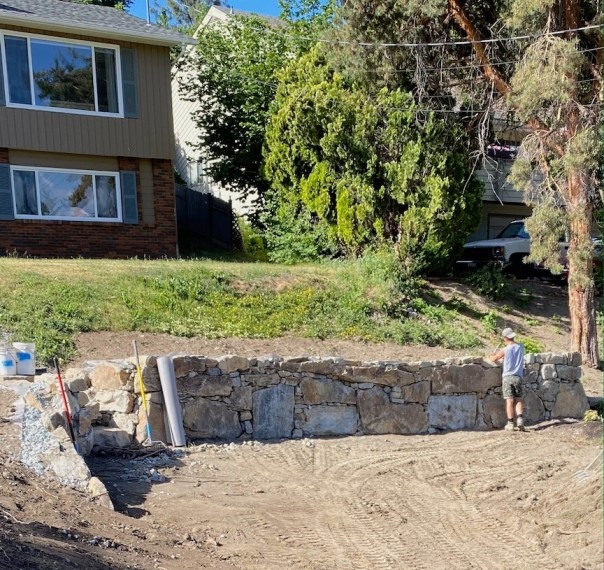Retaining walls are an essential part of many properties in Kelowna, British Columbia. They are used to hold back soil, prevent erosion, and create level ground for construction. If you are planning to install a retaining wall, it is important to plan and budget for the project carefully. Here are some tips on how to plan and budget for your Kelowna retaining wall construction project.
Assess the Site
The first step in planning for a retaining wall construction project is to assess the site. Consider the terrain, the slope, and the soil conditions. These factors will determine the type of retaining wall that will be suitable for the site. For example, if the soil is loose and unstable, a reinforced concrete wall may be required. If the site is on a steep slope, a retaining wall with a stepped design may be necessary to accommodate the slope.
Determine the Purpose
Next, determine the purpose of the retaining wall. Will it be used to create level ground for construction, prevent erosion, or improve the aesthetics of the property? The purpose of the retaining wall will also determine the type of wall that will be suitable for the site. For example, a decorative retaining wall will have different design requirements compared to a wall designed for soil retention.
Set a Budget
Once you have assessed the site and determined the purpose of the retaining wall, set a budget for the project. Consider the cost of materials, labor, and any additional costs, such as permits and inspections. It is important to set a realistic budget that will enable you to complete the project successfully without incurring significant additional costs.
Choose the Materials
The next step is to choose the materials for the retaining wall. There are many materials available, including concrete blocks, natural stone, and timber. Each material has different characteristics and cost implications. Consider the aesthetics, durability, and maintenance requirements of the materials when making your choice.
Determine the Design
The design of the retaining wall will also impact the cost of the project. For example, a simple straight wall will be less expensive than a wall with a stepped design. Consider the height and length of the wall, as well as any curves or corners. The design should be functional and aesthetically pleasing while staying within your budget.
Get Quotes from Contractors
After determining the design and materials, get quotes from contractors. It is essential to choose a reputable contractor with experience in retaining wall construction. Request references and check their credentials before making a decision. Compare the quotes and choose a contractor that can complete the project within your budget and timeline.
Factor in Additional Costs
In addition to the cost of materials and labor, there may be additional costs associated with the retaining wall construction project. For example, permits and inspections may be required, and these will incur additional costs. It is essential to factor in these additional costs when setting the budget for the project.
Conclusion
Planning and budgeting for a retaining wall construction project in Kelowna requires careful consideration of the site, purpose, materials, design, and cost. It is essential to choose the right materials and design while staying within your budget. Getting quotes from reputable contractors and factoring in additional costs, such as permits and inspections, will help to ensure the success of the project. A well-designed and constructed retaining wall will enhance the aesthetics of the property, prevent soil erosion, and provide level ground for construction. Read more
Kelstone Contracting
2951 Richter Street,
Kelowna BC V1Y 2R8
Phone 250-212-6099
